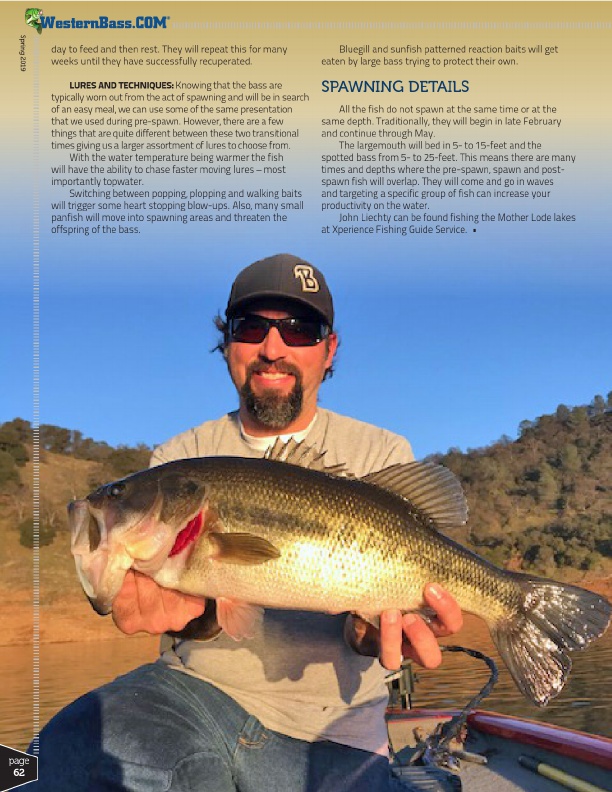
Spring 2019
®
day to feed and then rest. They will repeat this for many weeks until they have successfully recuperated.
Bluegill and sunfish patterned reaction baits will get eaten by large bass trying to protect their own.
LURES AND TECHNIQUES: Knowing that the bass are typically worn out from the act of spawning and will be in search of an easy meal, we can use some of the same presentation that we used during pre-spawn. However, there are a few things that are quite different between these two transitional times giving us a larger assortment of lures to choose from.
With the water temperature being warmer the fish will have the ability to chase faster moving lures – most importantly topwater.
Switching between popping, plopping and walking baits will trigger some heart stopping blow-ups. Also, many small panfish will move into spawning areas and threaten the offspring of the bass.
SPAWNING DETAILS
All the fish do not spawn at the same time or at the same depth. Traditionally, they will begin in late February and continue through May.
The largemouth will bed in 5- to 15-feet and the spotted bass from 5- to 25-feet. This means there are many times and depths where the pre-spawn, spawn and post- spawn fish will overlap. They will come and go in waves and targeting a specific group of fish can increase your productivity on the water.
John Liechty can be found fishing the Mother Lode lakes at Xperience Fishing Guide Service. •
page 62